By Vibha Singh | Director – APAC
This content has been inspired from the work of Jagadeesh J, VP – Digital Marketing & Growth, Unacademy
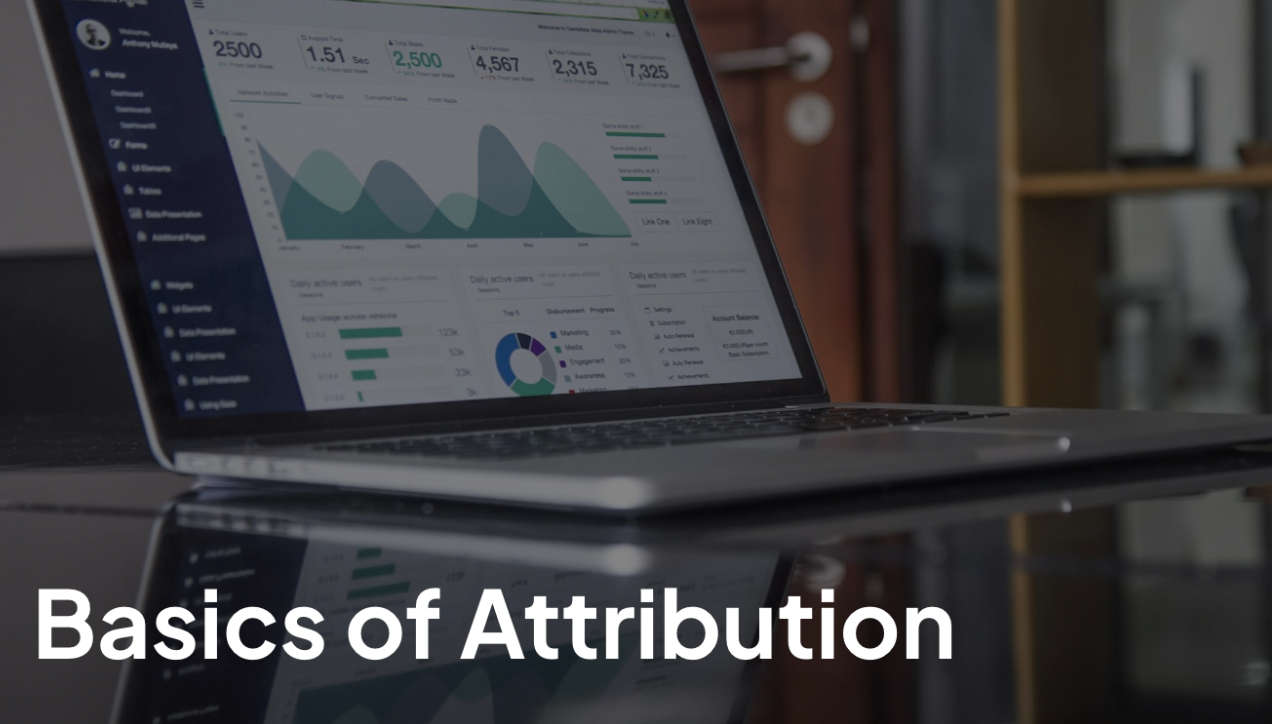
Table of Contents
What is attribution ?
Think of a football game and visualize the position of all players: Goalkeeper, defenders, midfielders and forwards.
When a goal happens, who do you think should get the most credit for kicking the ball into the goalpost?
The last person who kicked the ball in the goal post
or
the second last person who made the right decision to make the pass to this last person who finally put it in goal-postl
or
The midfielders who took it successfully closer to the Forwards
Or
The first player who kicked the ball to be sent to midfielders
Or
Isn’t it actually the effort of the entire team who passed the ball from player to player and created the right possibilities for a goal to occur?
However, then how much weightage each player needs to be given as the journey of every goal is different? E.g. What if the ball remained in mid-field for too long? Do you think then the first player is responsible in any way for that goal to happen
Did we complicate it for you?
Creating an analogy, the same football goal happens in the Digital World every time a conversion (Session, Lead, ATC or Final Purchase; or any other relevant business goal) happens in your business ecosystem.
Ever since the world of digital marketing exploded, marketers have worked day and night to understand which channel has brought them the maximum conversions. After all, every marketer would ideally like to allocate his marketing spends to the channel that brings him the maximum sales. However, throughout the buyer journey, there are usually multiple channels and digital touchpoints where potential leads can turn into paying customers, and attributing a sale to the correct one is essential for the success of any campaign.
Where did the customer first engage with your brand? How did he discover the products he wanted to purchase? And finally, what pushed him/ what was his trigger to make the final payment and purchase the product?
If you’re able to discover the answer to these questions – you would be able to optimize your campaigns and marketing efforts efficiently and tap into the right audience at the right place and right time. In simple words, Attribution is similar to a game of football.
In this article, we try to understand the various types of attribution models and their significance:
Single touch vs Multi touch attribution :
Normally it takes more than one digital touch point in any user’s journey starting from discovery to closure. In this scenario, the credit of conversion can be given to single or multiple touch points.
Single touch attribution:
In case where a single interaction in the whole journey is given the complete credit of the conversion is known as single touch attribution e.g. First Click attribution where the complete credit is given to the first digital touch point through which the user became aware of the brand or Last Click attribution (the most popular one) where the complete credit is given to the last click just after which the conversion happens. There are more single touch attribution models such as Last Non Direct click.
There are following types of Single touch attribution models:
1. First-click attribution
First-click attribution is wherein all credit of a final conversion/purchase is given to the very first interaction your business had with a customer.

2. Last-click attribution
On the other hand, the last-click attribution model gives all of the credit to the last interaction your business had with a customer before they convert/make a final purchase. This model gives weightage to the last touch point in the customer journey and gives it all the credit for the conversion.
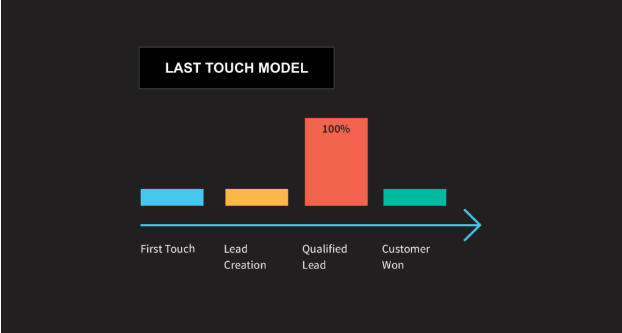
3. Last Non-Direct Click Attribution
The last non-direct click attribution models give 100% of the credit to your customer’s last non-direct touchpoint. Non-direct traffic is all traffic that’s been guided to your website from another source.

For example, if a user receives one of our monthly newsletters in his inbox, clicks on our website and browses around, and then a week later goes directly to our website and signs up, then in this scenario, the newsletter should get all the credit.
Multi touch attribution:
As a user’s journey has multiple touch points, assigning credit to one single point isn’t fair, however which touch point should be assigned how much credit, is also a complex question to answer for most of the brands out there.
Let’s go through a few basic Multi touch attribution models:
1. Linear Attribution
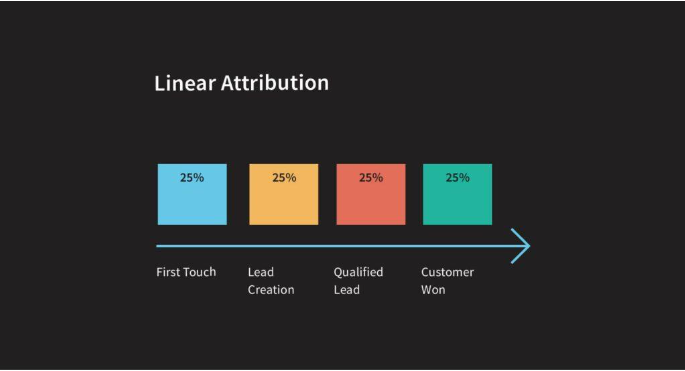
In the Linear attribution model, the credit is divided equally amongst all touchpoints in a customer journey. If there were 5 touchpoints in the customer journey, each of those points would get 20% of the overall credit for that sale.
For example, when a customer sees our ad on Facebook, signs up for our monthly newsletter, and clicks on a website link in the newsletter. Then the next week, suppose the customer goes to our website directly and signs up. This means – there are 3 digital touchpoints in this situation and each would get equal credit.
2. Time Decay Attribution
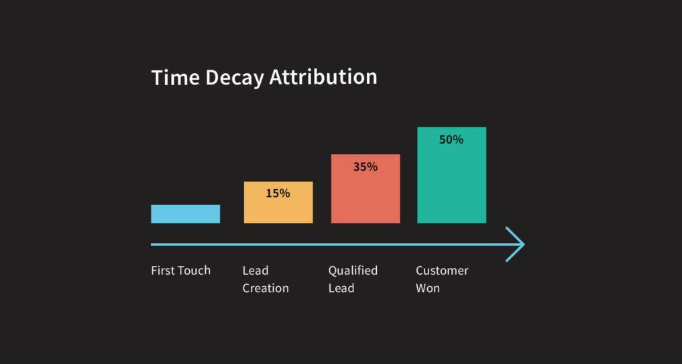
On the other hand, the last-click attribution model gives all of the credit to the last interaction your business had with a customer before they convert/make a final purchase. This model gives weightage to the last touch point in the customer journey and gives it all the credit for the conversion.
3. Position-Based Attribution
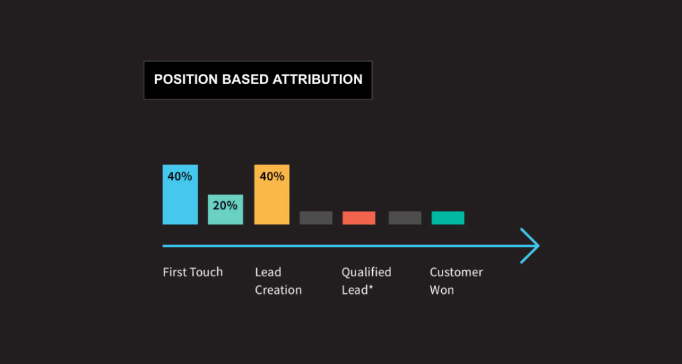
There are various position based attribution models such as U shaped, W shaped etc. In the U shaped model, 40% of the credit is assigned to each – the first and last interaction, and the remaining 20% of the credit is distributed evenly to the middle interactions. Like in the above example, the first and the last interacted campaign got 40% credit each.
For example, if a prospect first makes contact with our business through a Google organic search, clicks on one of our Facebook posts and signs up for our monthly newsletter, then signs up on our website after clicking on the email, the first (organic search) and third touch (email) each receive 40% of the credit, and the Facebook click receives the remaining 20%.
The W shaped model gives the maximum credit to First, Last and Middle clicks and balance credit is evenly distributed in balanced clicks.
Position based models can be customized as well for a business if the correct positions can be defined to be given the most credit.
4. DDA (Data Driven Attribution)
DDA is an efficient attribution model for assigning the credit based on auto algorithms and calculates variable credit for each touch point after calculating the trend of contribution from each touch point over a period of time. Though the model solves the complex calculation for brands, however in absence of enough data-points, it’s not advisable for getting into the complexities of Multi Touch attribution models such as DDA.
Each DDA model is different for each advertiser and conversion. It calculates the due credit needed to be given to each digital interaction in the journey of the customers from start to end. The model incorporates factors such as time from conversion, device type, number of ad interactions, the order of ad exposure, and the type of creative assets. Using a counterfactual approach, the model contrasts what happened with what could have occurred to determine which touchpoints are most likely to drive conversions.
How to choose the right attribution model ?
Which of these models should a brand follow and based on what variables this decision should be taken or should a brand have its own custom attribution model defined based on the logic of its business?
Normally, the brands are not able to get a concrete answer to these complex questions and in this scenario, Last Click and DDA (Data Driven Attribution) are the most practical and followed attribution models in the digital world.
Single touch attribution is one of the simplest attribution types which helps immensely while a business runs at a low scale. Last click attribution assigns the complete credit to the last interaction point after which the conversion happens and thus, helps brands to scale in the initial growth stage to keep the focus intact to scale platforms clearly contributing to conversion. Also, it helps to take instant calls for optimizing budget spent on performance heavy inventories/campaigns run over platforms such as Meta, Google etc.
At the same time, for a scaled business spending across multiple platforms contributing to branding and performance, models such as DDA or custom attribution models built with combination of more than one single touch attribution models help to build comprehensive analysis to build long term growth strategies.
Google ad-panel helps brands to implement complex attribution models such as DDA model by default with a few basic data requirements.
Before you take your call deciding on any of the above attribution models, here are a few concepts which need to be understood with clarity as they directly or indirectly impact your call to choose the most suitable attribution model for your business.
Source of Truth
Source of Truth (SoT) : The source from where you read the data for measuring the success of Advertising efforts.
There are three major sources where your advertising conversion data is lying:
- Ad-panels: The ad-panels of each platform (Such as Google and Meta) has their own attribution models to attribute any specific conversion
- Third party attribution & analytics tool: Google Analytics 4 (GA4)is the most used and popular analytics tool to attribute the conversion happening on your website. Similarly, in the case of App we have several Mobile Measurement Partners (MMPs) such as AppsFlyer, Branch, Adjust, Singular and more to address attribution and analytics.
- Backend CRM: This is the ultimate source of truth which gives you the clear picture of actual conversion happening in any business
Attribution Window
Attribution Window: Conversions can happen with a lag of days or weeks after a person gets in touch with your brand digitally. The time period in which only if the conversion action happens, it will be assigned to that particular digital touch point, is called the attribution window or Lookback window.
E.g. if you click on a Meta ad today and purchase the item after 2 days directly going on the website and the attribution window defined on Meta is “7 days click”, Meta will attribute this purchase to that Meta ad. However if you purchase the item on the 8th day, this ad will not get the attribution of this purchase.
Talking about the application of attribution window, for a low involvement category such as grocery delivery, the conversion if happens, the 7 days attribution window is enough to be considered for the impact of any digital touch point that would have caused this purchase however in high involvement category such as Insurance, this can be 15 days or more.
Pro-Tip:
Based on the nature of your business, you need to understand/define how much time people take from first interaction to final purchase, on an average for your business and then, this should be the conversion window across all ad-panels, analytics tools or any other source of data.
Attribution Window
Click through vs View through attribution :
Largely the digital industry is driven by Click Through attribution which means someone clicking on your ad (Counted under paid channels such as Google or Meta) or your listing on any search platform (Counted under Organic) or any other source, come to your website/app and eventually make a purchase or fill a lead or completing any other conversion action.
However major ad-platforms assign credit even to impressions (or views) of your ad contributing to conversions. So not necessarily someone clicking on your ad, but just looking at it gets credit for bringing you conversion.
When considered for a short period (e.g. 7-day click or 1 day view) or for certain platforms which are video heavy such as YouTube or Instagram Reels/Story, accounting View Through attribution becomes very important. However this concept can lead to a few famous Attribution Traps which we have discussed in detail in another article.
How attribution works for major ad and analytics platforms
Going back to SoT, let’s figure out how attribution works for each of these above sources:
1. Ad-panels: The two major ad platforms (Google & Meta) which control 60-70% of overall advertising budget primarily work on “Last Click” attribution with a few nuisance which needs to be understood
a. Google Ads Attribution: As of now Google provides options to select out of several different single and multi touch attribution models. However staring May 2023, Google will have only two kind of attribution models: Last Click Attribution & DDA: Data Driven Attribution
By default, in all google ad accounts, DDA will be implemented. Advertisers will have the option to select the established ‘last click’ attribution model, although they will need to manually apply this change for each individual conversion action
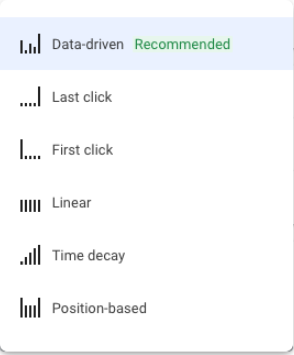
While defining the attribution for each conversion action, you can also mention the conversion attribution window (normally defined in number of days).

b. Meta Attribution:
Two unique dimensions of Meta Attribution is by default attribution window/model in which you can look at conversions and View through attribution which takes into account views along clicks
The common attribution settings available in Meta are:
• 1-day click
• 7-day click
• 1-day click or 1-day view
• 7-day click or 1-day view (default)
The most popularly used one is 7-day click or 1-day view which is primarily the reason for the data discrepancy which happens between Meta and GA4 and lead to one of the major Attribution Traps i.e. View Attribution Trap as GA4 is not able to take into account Meta’s View Through conversions. The details of it are discussed in our other article here.
2. Third Party Analytics Tool:What’s the need of an Ad analytics tool when we have an ad-panel sharing the full funnel journey?
An ad analytics tool is a relatively less biased source of data than any ad-platform as it looks at cross-channel conversions while attributing it to a specific source in case you are advertising across multiple channels.
Pro Tip:
Always ensure that the difference between the data from ad-panels Vs. Analytics tools should not be more than 20-30% if the conversion events are accurately integrated.
Google Analytics 4: Though the role of analytics tools such GA4 for website analytics and MMPs for App analytics are beyond this, however for the benefit of this article, we shall primarily restrict our understanding of these tools limited to Ad-analytics.
By default, GA4 uses the Data Driven Attribution (DDA) model about which we have spoken earlier in this article. DDA is an AI driven attribution model which assigns results uniquely in case of each advertiser and conversion. Also, by default, the attribution window set for GA4 is 3 months.
The attribution model for earlier version of Google Analytics i.e. Universal Analytics (UA) was Last Non-Direct Click in case conversion comes from a direct visit and Last click in all other scenarios which means if the user comes to your website via a direct url typed in his/her browser, the credit will be given to second last source with which he interacted while if the user come via any other source than direct, the attribution will go to last touch point itself.
Let’s take an example:
Scenario 1: Google Search Ad Clicked but not purchased: Facebook Video Ad Viewed but no purchased : Organic Listing Clicked but not purchased : Opened the website directly and Purchased
The attribution will go to Organic in this case (Last Non-Direct Click)
Mobile Measurement Partner (MMPs): In case of App, the dependency for attributing the conversion to right source even increases more on a third party tool i.e. MMPs- such as AppsFlyer, Branch, Adjust, Singular and more.
Each of these attribution and analytics tools have their own custom attribution models and again serves the same purpose as GA4 does in the case of Website.
These MMPs create several views for the help of advertisers based on different attribution models. E.g. in case of AppsFlyer, while the Overview tab works on LTV attribution model (and assigns the conversion to the source of install within the attribution window), the activity tab tells you total conversions happened in a specific period of time (E.g. total conversions happened via a certain platform/campaign in a month irrespective of from where the install came)
3. Back end CRM (First Party Data):CRM data gives you an exact picture of the actual number of conversions happening on your website. While running campaigns, if we send UTM parameters to CRM, we can stitch the whole journey of a user which becomes the most unbiased and sacrosanct way of attribution.
With digital marketing heading towards privacy first world, the importance of First Party data will further increase and stitching it with ad-panels and analytics tools will become extremely crucial for advertisers.
Pro-tip:
While most of the marketers collect data of their customers, however, they ignore some crucial data stitching fields such as Google Click ID (GCLID) in case of web or Device ID in case of App to track the journey of a user who came via an ad.
After knowing the basics of attribution, learn how attribution can lead to some regular attribution puzzles in a day to day life of a digital marketer and how attribution if not implemented correctly can pose serious traps when a brand tries to scale in a long run.
Subscribe to our newsletter for more such content or fill the best rated ad-strategy session request to uncover the growth opportunities for your account.



